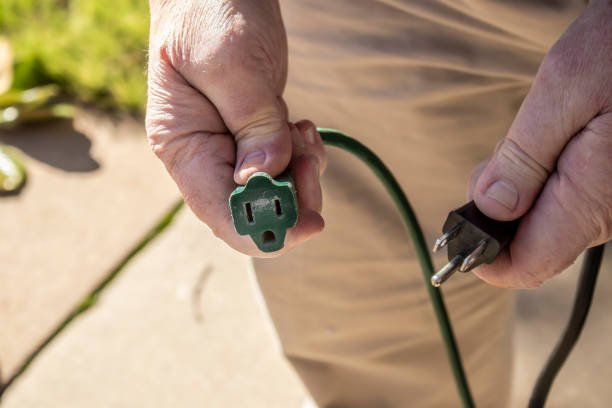Safety First: Tips for Choosing and Using Extension Cords for your new home
RH Business Marketing Solutions
When you need more outlets around the house, extension cords often become necessary to reach appliances and electronics in far-off rooms. Extension cords give a fast, simple fix for getting power anywhere it's required.
However, mishandling these handy cords brings electrical hazards. It's essential to pick extension cords appropriate for your purposes and handle them with care.
Choosing the suitable cable and following the correct safety tips enables efficient utilization of devices and keeps the family and entire home away from dangers such as fire due to faulty electric cords.
Therefore, this article explores ways one can use when choosing the right extension cord. Some of these tips that render an extension cable safe and an effective solution to electricity risks are as follows:
Amperage Rating
The amperage or amp rating indicates how much electric current a cord can handle.
Appliances and devices have amp requirements based on their electrical load. Plugging in an apparatus that draws more amps than the cord is rated for can lead to overheating.
This creates a severe fire risk. Always check the amp rating of extension cord and ensure it meets or exceeds the appliance's requirements.
Cord Length
Longer extension cords because voltage drops, which can damage appliances and electronics. The longer the cord, the greater the voltage drop across the length of the wire. This results in devices getting lower voltage than needed. Choose the shortest cable reaching the outlet to minimize voltage drop issues.
Cord Thickness
A wire gauge indicates extension cord thickness. Lower gauge numbers mean thicker cords. 14-gauge and 12-gauge cords are best for household uses. The thicker wire allows them to handle more amps safely.
Thinner extension cords like 16-gauge often can't provide enough power for appliances.
Outdoor Rating
Any extension cord used outdoors must have a designation for outdoor use. Outdoor cables are designed to withstand exposure to weather elements and temperature extremes. Using an indoor-rated cord outside can lead to premature wear and damage to the wiring.
If needed, you can safely deliver power where required by selecting the right cord length, gauge, amp rating, and outdoor rating. Taking the time to choose the proper extension cord prevents electrical issues.
Inspecting Extension Cords
Before using any extension cord, inspect it thoroughly to spot any potential problems. Damaged and worn cords pose serious fire and shock risks. Check the following areas:
· Cracks or cuts in the cord insulation
· Fraying wires at the plugs or along the length
· Loose plug blades or cracked plastic housing
· Exposed copper wiring
· Signs of melting or burn marks
· Kinks in the cord
Avoid using cords with any damage. Worn insulation and exposed wires can energize the cord surface, shocking anyone who touches it. Loose plugs also cause overheating, sparking, and fires.
In addition to inspecting before each use, periodically check cords for any signs of wear. The repeated flexing of a cord in use slowly breaks down insulation over time.
Outdoor extension cords require extra inspection attention. Check for cracking or dry rot on outdoor cables. Weather and sun exposure can degrade cord jackets. Replace outdoor cords at the first sign of damage to maintain safety.
Safely Using Extension Cords
Safe usage steps are vital after selecting the right cord and inspecting the condition. Follow these guidelines when using extension cords:
· Completely unfurl cords rather than leaving them coiled - This prevents overheating.
· Use cord covers or tape down cords - Contain tripping hazards.
· Avoid overloading cords - Do not exceed rated amp capacity.
· Never run cords under rugs or tightly against walls - Allows heat dissipation.
· Do not string multiple extension cords together - Daisy chaining raises fire risk.
· Keep outdoor cords clear of moisture - Prevents electrical shorts/shocks.
· Position cords safely away from foot traffic - Eliminates tripping hazard.
· Unplug appliances before resetting tripped breakers - Reduces shock risk.
· Do not attempt to repair a damaged cord yourself - Hire an electrician to replace worn cords.
Also, never remove the ground pin from a 3-prong cord to fit an older 2-prong outlet. This defeats the grounding protection. Use an adapter or hire an electrician to replace the outdated outlet instead.
Following the manufacturer's instructions when using any extension cord is also critical for safety. Read labels carefully and adhere to all listed precautions. Never override built-in safety features.
With safe usage habits, extension cords can provide much-needed reach without electrical mishaps. Being mindful when handling and positioning cords prevents accidents and injuries.
Frequently Checking Cord Condition
In addition to inspecting before each use, check the condition of extension cords regularly. Repeated use of subjects' cords for bending and handling that breaks down insulation over time. Periodic inspections find issues before they escalate into significant hazards.
Develop a maintenance schedule for examining extension cords based on frequency of use. Cords used daily or weekly should be checked monthly. Those used only occasionally may only require inspection every six months. Mark your calendar to ensure you remember.
Conclusion
Extension cords provide a quick way to add outlets instantly in your home. However, caution must be taken when running these flexible cables to avoid electrical hazards.
Choose cords with adequate amp ratings for appliances and the shortest length possible. Inspect thoroughly for damage before each use. Never overload cords or use them in ways that can cause overheating.
Invest in quality extension cords and replace them when worn. Make cord safety a priority through careful inspection and use. Take simple precautions like fully unraveling cords and securing cables away from foot traffic.
Periodically check the condition and discard damaged cords promptly. Follow safety guidelines consistently; cords will provide flexibility without compromising your home's electrical integrity.


